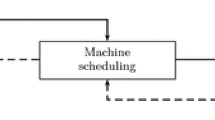Abstract
As mining progresses deeper and further away from the shafts, the time to travel to and from the workplace increases. In South Africa, travelling times in excess of 3 h is becoming the norm rather than the exception. Travel times in shaft systems can equate to 45 min in each direction with a further 45 min required from the station to the working place. An addition to travelling a further 30 min is taken at the waiting place for the planning of the days work, safety discussions and the changing into the stope work clothes. Face time is further shortened by the re-entry examination in a stope, which can take up to 90–120 min depending upon ground conditions. The individual tasks required to complete the mining cycle: face preparation, support, drilling, charge/blast and cleaning remain a time-consuming process. Over the years, attempts have been made to speed up the mining process through innovation, new technologies, proper management and scheduling and there remains a deficiency in the available time on the working face to conduct all the activities required to achieve a safe, daily and quality blast. One of the proposed solutions to this problem is to introduce a change from a three-shift mining cycle (8 h 20 min) to a second 12-h working cycle. Mining personnel in countries, such as Australia and Canada, have been working on this type of cycle for many years. However, is this shift cycle suitable for South Africa mining conditions? Especially, as mining is often conducted in mature gold mines with working faces located far from the shafts. In the platinum mines, operations continue to progress deeper and also further from the shaft. Due to the depth of the South African gold mines and the high geothermal gradient associated with the Bushveld Complex (hosts the platinum deposits), environmental conditions may preclude long underground shifts. The paper investigates the opportunities available to increase the current working shift from 8-h 20-min shift to a 12-h shift. The article will highlight the advantages of moving to extended shifts while also identifying some of the difficulties that a 12-h shift holds for the workers.
Access this chapter
Tax calculation will be finalised at checkout
Purchases are for personal use only
Similar content being viewed by others
References
Nelwamondo, P., Mpanza, M., Rupprecht, S.: The influence of work pressure on worker attitudes towards health and safety in a platinum mining stope. In: Society of Mining Professors 6th Regional Conference Johannesburg, 12–14 March 2018 The Southern African Institute of Mining and Metallurgy, (2018)
Rupprecht, S.M., Williams, S.B.: Audit and review of current man transport systems. Deepmine Task 12.1.1, CSIR Division of Mining Technology, Johannesburg (2000)
Moore-Ede, M., Davis, W., and Sirois, W.: Advantages and disadvantages of twelve-hour shifts: a balanced perspective. Circadian Inf. Limited Partnership (2007)
Smith, O.: The effects of a cooler underground environment on safety and labour productivity on President Steyn Mine: In Gill A.J., et al. (ed) Proc. Mine Safety and Health Congress, Johannesburg Chamber of Mines of South Africa (Mine Safety Division), pp. 105 –112 (1988)
Brake, R., Donoghue, M., Bates, G.: Management of heat stress in a hot, humid, underground environment. Saf. Sci. Monit. (1999)
Author information
Authors and Affiliations
Corresponding author
Editor information
Editors and Affiliations
Rights and permissions
Copyright information
© 2019 Springer Nature Switzerland AG
About this paper
Cite this paper
Rupprecht, S.M. (2019). A Move to a 12-Hour Working Shift—The Benefits and Concerns. In: Widzyk-Capehart, E., Hekmat, A., Singhal, R. (eds) Proceedings of the 27th International Symposium on Mine Planning and Equipment Selection - MPES 2018. Springer, Cham. https://doi.org/10.1007/978-3-319-99220-4_46
Download citation
DOI: https://doi.org/10.1007/978-3-319-99220-4_46
Published:
Publisher Name: Springer, Cham
Print ISBN: 978-3-319-99219-8
Online ISBN: 978-3-319-99220-4
eBook Packages: Earth and Environmental ScienceEarth and Environmental Science (R0)




